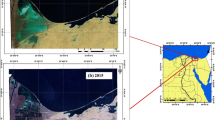Abstract
It is efficient and reliable to investigate the reed resources of Bosten Lake in Xinjiang, characterized by complicated types of reed land and very different reed growth using colour infrared aerial photos, Landsat images and multi band imagery. At first, on the basis of Landsat images and relevant data, we analyzed the ecological environment of the studied area, the characteristics of reed land types and imaging mechanism to determine the program for abstracting remote sensing information and aerial photographic conditions. On the processed Landsat images and aerial photos, we considered typically geographic features and reed land types, preselected ground sampling sections and sites, then determined indexes classifying reed land types according to sampling data and image characteristics, established various interpretation keys, drew distribution maps of reed land types and measured the area of various types of reed land following geometric correction. On the other hand, based on sampling values and habitat conditions of reed, we divided the studied area into a number of pieces, estimated weight per unit area with weighted average method one piece by one piece, finally calculated the total reserve of reed resources.
Similar content being viewed by others
References
杨利普.博斯腾湖合理利用问题.自然资源, 1980 (1).
Author information
Authors and Affiliations
Rights and permissions
About this article
Cite this article
Hua, R., Li, Y. Application of remote sensing technique to the investigation on reed resources of Bosten Lake. Chinese Geographical Science 2, 266–276 (1992). https://doi.org/10.1007/BF02664604
Issue Date:
DOI: https://doi.org/10.1007/BF02664604




